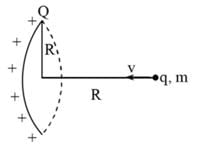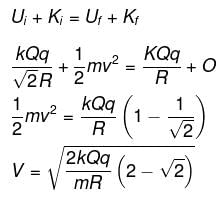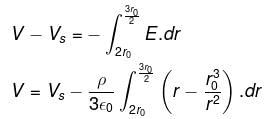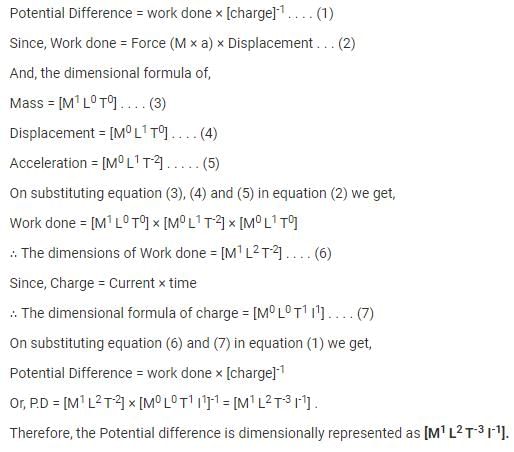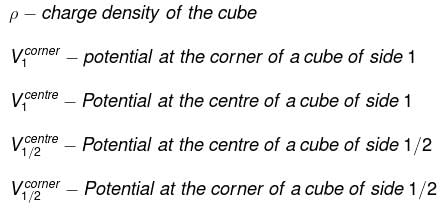Multiple Choice Questions (MCQs): Electrostatic Potential - NEET MCQ
20 Questions MCQ Test Physics Class 12 - Multiple Choice Questions (MCQs): Electrostatic Potential
The minimum velocity v with which charge q should be projected so that it manages to reach the centre of the ring starting from the position shown in figure is
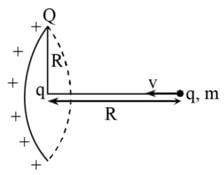

The work done in moving a positive test charge qo from infinity to a point P at a distance r from the charge q is
| 1 Crore+ students have signed up on EduRev. Have you? Download the App |
Electric field intensity is equal to
Electric potential at a point located far away from the charge is taken to be
A charge of 6 mC is located at the origin. The work done in taking a small charge of -2 x 10-9 C from a point P (0, 3 cm, 0) to a Q (0,4 cm, 0) is
On moving a charge of 20 coulombs by 2 cm, 2 J of work is done, then the potential difference between the points is
The amount of work done in moving a charge from one point to another along an equipotential line or surface charge is
A charge is uniformly distributed inside a spherical body of radius r1 = 2r0 having a concentric cavity of radius r2 = r0 (ρ is charge density inside the sphere). The potential of a point P or a distance 3r0/2 from the centre is
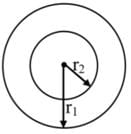
Electric field intensity at point ‘B’ due to a point charge ‘Q’ kept at a point ‘A’ is 12 NC-1 and the electric potential at a point ‘B’ due to same charge is 6 JC-1. The distance between AB is
E = -dV/dr, here the negative sign signifies that
Work done in carrying 2C charge in a circular path of radius 2m around a charge of 10C is
Dimensional formula for potential difference is
A point charge 2nC is located at origin. What is the potential at (1,0,0)?
If 100 J of work has to be done in moving an electric charge of 4C from a place where potential is -5 V to another place, where potential is V volt. The value of V is
A particle of charge q1 = 3μC is located on x-axis at the point x1 = 6 cm. A second point charge q2 = 2μC is placed on the x-axis at x2 = -4 cm. The absolute electric potential at the origin is
A long, hollow conducting cylinder is kept coaxially inside another long, hollow conducting cylinder of larger radius. Both the cylinders are initially electrically neutral.
Equal charges are given to two spheres of different radii. The potential will
Consider a solid cube made up of insulating material having a uniform volume charge density. Assuming the electrostatic potential to be zero at infinity, the ratio of the potential at a corner of the cube to that at the centre will be
Electric potential varies with distance such that V(x) =ax-bx3; where a and b are constants. Where will the electric field intensity be zero?
|
97 videos|336 docs|104 tests
|


